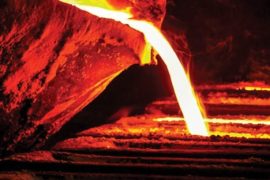Lost wax casting, or investment casting, is a centuries-old technique for creating intricate metal objects. This process involves creating a wax model of the desired object, encasing it in a mold, and then melting away the wax to leave a cavity for the molten metal.
However, choosing the right metal is one of the most critical aspects of lost wax casting. The choice of metal significantly impacts the final product’s strength, appearance, and cost. In this article, we’ll explore different metals suitable for lost wax casting projects and the factors to consider when making your selection.
Gold And Silver
Gold and silver are classic choices for those looking to create exquisite jewelry or decorative pieces. They are favored for their malleability, allowing for intricate and detailed designs.
Gold is available in various karats, with 18k and 14k being popular choices due to their balance of durability and purity.
Silver is another popular choice for Investment casting due to its affordability and attractive luster. These precious metals are ideal for creating pieces with intricate details, like filigree work or delicate engravings.
Bronze
Bronze is an alloy composed mainly of copper and tin, making it an excellent choice for lost wax casting.
It has been used for centuries to create sculptures and other artistic works. Bronze offers a unique combination of strength, durability, and a beautiful patina as it ages.
Its reddish-brown color and versatility make it a favorite among artists and craftsmen for creating both small and large pieces.
Brass
Brass is another copper alloy that can be used for lost wax casting. It is made by combining copper and zinc and is known for its bright and golden appearance.
Brass is ideal for creating decorative objects, musical instruments, or architectural components. It is corrosion-resistant, easy to work with, and offers a distinctive look ranging from shiny gold to a more subdued patina over time.
Aluminum
Aluminum is a lightweight, corrosion-resistant metal that can be used for lost wax casting It is famous for creating intricate light parts such as aircraft components automotive parts, and artistic sculptures
Although it is not as dense or strong as some other metals, aluminums low melting point makes it well-suited for casting Remember that aluminum pieces may require additional finishing to achieve the desired appearance
Copper
Copper is a versatile metal with a distinctive reddish-brown color It is prized for its excellent thermal and electrical conductivity which makes it a preferred choice for electrical components
Additionally copper is used in artistic projects for its unique color and ability to develop a green patina over time Its important to note that copper is relatively soft and may not be suitable for heavy-duty applications
Steel
Steel is a solid and durable metal that can be used for lost wax casting when higher structural integrity is required
There are various types of steel including carbon steel an stainless steel each with unique properties
Carbon steel is known for its strength and affordability but is prone to rust On the other hand stainless steel is resistant to corrosion making it an excellent choice for applications in demanding environments such as marine or medical equipment
Factors To Consider When Choosing Metals For Lost Wax Casting:
It would help if you considered several important factors when choosing a metal for a lost wax casting project.
The specific application should be considered to ensure the right balance of strength, weight, and cost. The final product’s desired finish and appearance should also be considered.
For example, if creating a decorative piece with intricate details, gold or silver may be more appropriate than. When selecting a metal for your lost wax casting project, consider the following factors:
Design Complexity: Metals vary in terms of malleability and flow characteristics. Some are better suited for intricate designs, while others are ideal for structural or functional components.
Budget: Precious metals like gold and silver are more expensive than base metals like bronze and brass.
Intended Use: Think about the purpose of the final product. Is it for decoration, jewelry, or functional components? It will guide your choice of metal.
Durability: Consider the environmental conditions the object will face.
Color and Finish: The appearance of the metal, both when new and as it ages, is crucial. Some metals develop unique patinas over time.
Conclusion
Choosing the right metal for your lost wax casting project is a crucial decision that directly affects the quality and appearance of the final product. Whether you’re creating intricate jewelry, decorative art, or functional components, there’s a metal that suits your needs.
When choosing, consider factors like design complexity, budget, intended use, durability, and appearance. By understanding the unique properties of each metal, you can create stunning, enduring pieces through the lost wax casting process.
As Malaysia’s sole alloy steel foundry, we at Inter Metals Precision specialize in casting ferrous materials like stainless steel and non-ferrous materials like aluminum and copper.
Our vision is to become the pioneering and favored supplier of casting solutions. We are dedicated to adding value and delivering industry solutions while upholding the highest quality standards.


